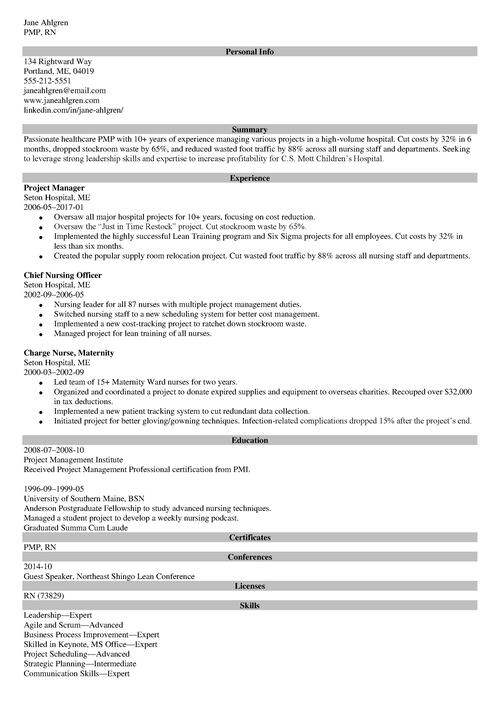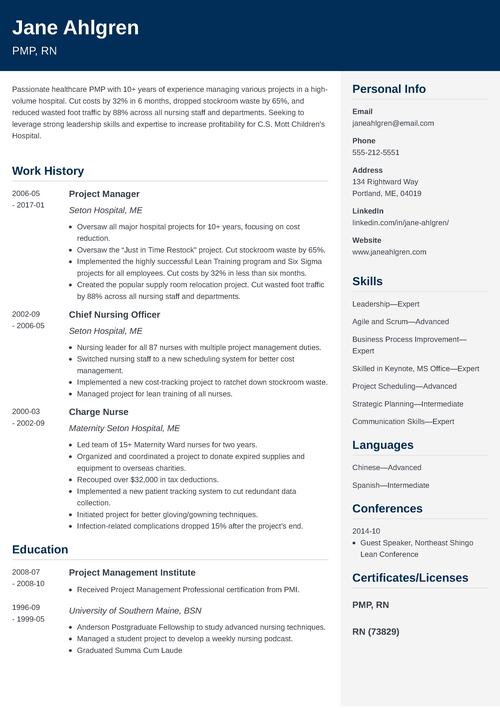What Does a Good Resume Look Like (Examples & Tips)
Create Your Resume NowWhat does a resume look like when it's done right? First impressions matter, and your resume's appearance can be just as crucial as its content. Hiring managers spend only seconds scanning each application, so what should a resume look like to grab their attention instantly?
A well-structured, visually appealing resume makes it easier for recruiters to find the necessary information. But what does a good resume look like in today's competitive job market? I'll tell you everything you need to know!
This guide will show you:
- What a resume should look like according to modern hiring standards.
- Actionable tips and tricks you can use to have the best-looking resume in the pile.
- Bonus resume design resources to make your resume look great.
Want to save time and have your resume ready in 5 minutes? Try our resume builder. It’s fast and easy to use. Plus, you’ll get ready-made content to add with one click. See 20+ resume templates and create your resume here.
Sample resume made with our builder—See more resume examples here.
Let’s break down the most important components of what a perfect resume looks like.
1. Proper Resume Formatting and Design for the Best Looking Resume
On average, recruiters spend just 7 seconds initially scanning a resume. But—to let you fully understand just how critical the looks of your resume are, let’s see what America’s leading association of professional resume writers has to say on the subject:
This is how your resume should look:
1. Professional Fonts
Here are some tips on how to choose the best font for your resume:
- Use an easy-to-read typeface. One that’s elegant and formal on the one hand (so no Comic Cans) and modern and stylish on the other (so no Times New Roman).
- Keep your font size between 10 and 12 pt.
- There are many good picks. Some fonts you can consider include: Cambria, Calibri, Helvetica, Bookman Old Style.
- Both serif and sans-serif fonts can look good on a resume so feel free to experiment in this area.
- Once you choose a font, stick to it on the whole document. Ideally, use the same font when writing a cover letter for a resume.
2. Evenly-Set Margins
Resume margins on all four sides should be 1-inch.
If you want to fit more into a single-page resume, you can take some margin space out, but at least half an inch has to stay. Check our resume examples.
3. Consistent Line Spacing
Go for single or 1.15 line spacing for all resume sections. Use a double space before and after each heading, and in between entries in your work experience and education sections.
4. Clear Section Headings
Make your section headings slightly bigger than the rest of the text. You can also make them visually stand out by typing in ALL CAPS.
5. Enough White Space
Recruiters need some breathing room when reviewing resumes. Jam-packing the contents won’t make a resume look good.
How to check if there’s enough white space on a resume?
Print it out and look at it from a bit of distance. Does it feel crammed? If so, it most likely is.
6. No Graphics, No Photos
Fancy graphics can cause your resume to fail the ATS scan.
Photos? You’re looking for a job, not a date. Unless specifically asked for in the job ad (it might be the case for certain positions), leave pictures off your resume.
7. Ideally One-Page Long
How long should a good-looking resume be?
Go for a single page. Target your resume at a specific job offer and include only relevant details.
Make every word earn its place on your resume. But—
If you feel you’ll omit crucial details by trying to make a single-page resume, don’t force it.
Two-page resumes are OK for experienced candidates.

Pro Tip: A key factor in resume design is the strategic use of bolding, bullet points, and spacing to guide the recruiter’s eye to the most important details. Your name, job titles, and key achievements should stand out at a glance. Avoid over-formatting—too much bold text or excessive underlining can make your resume harder to scan. The goal is to create a natural flow that leads hiring managers to your most impressive qualifications effortlessly.
2. Including the Most Important Sections to a Professional Looking Resume
So you know the basics of what the perfect resume should represent, design-wise.
Now it’s time to take care of the contents. The first thing you have to do is include all the proper sections in the correct order - see What to Include in a Resume.
While the items order on your resume might vary depending on your career situations, for more than 9 out of 10 candidates, it’s best to follow the rules of a standard reverse-chronological resume format.
Here’s what sections to include on a good-looking resume.
(If you want to learn more about how to write each section, just click on one of the links below, to see a dedicated guide with examples.)
What Does a Good Resume Look Like? Standard Template
- Resume heading with your contact information (remember to include your LinkedIn profile)
- Resume profile: a professional summary of qualifications or a career objective for a resume.
- Work experience
- Educational background
- Professional skills
- Additional resume information (relevant awards, professional projects, freelance work, relevant certifications, volunteering experience, or hobbies and interests).
See what a good resume looks like in practice on our handy infographic.
What Should My Resume Look Like? Like This:

Making a resume with our builder is incredibly simple. Follow our step-by-step guide, use ready-made content tailored to your job and have a resume ready in minutes.
When you’re done, our resume builder will score your resume and our resume checker will tell you exactly how to make it better.
3. Bonus Materials and Resume Ideas for a Good-Looking Resume
Right—
You’ve learned the basics of how to make a resume stand out and attract the best job offers.
The thing is, sometimes the basics won’t do. Your resume can (and should!) have a personal twist. It should read and look 100% you.
Your resume should not only look professional but also reflect your career stage, industry, and target role. For example, a senior executive might benefit from a sleek, minimalist format emphasizing leadership achievements, while a creative professional could opt for a visually engaging layout. The key is to strike a balance between aesthetics and substance—ensuring your resume is polished yet tailored to your unique career story.
Here’s some extra reading that will help you create a standout resume with a design that reflects your individuality.
For starters, learn more about each three types of resumes:
Or, see this handy overview of the three above with extra resume tips on how to pick the perfect one for you: Best Resume Format.
I’d love you to give our resume builder a spin, but if you really want to stick to an MS Word resume, at least pick a beautiful template: Resume Templates for MS Word
Want to explore more options? See one of our galleries and find a resume that looks the way you want it to:
- One-Page Resume Templates
- Two-Column Resume Templates
- Student Resume Templates
- Creative Resume Templates
- Simple Resume Templates
- Best Resume Templates
Remember: it’s about what you say and how you present it.
Keep that motto in mind and you’re sure to land any job you set your sights on.
Plus, a great cover letter that matches your resume will give you an advantage over other candidates. You can write it in our cover letter builder here. Here's what it may look like:
See more cover letter templates and start writing.
Key Takeaway
Here’s what a resume should look like:
- Professional font, such as Cambria, Calibri, Georgia, or Verdana. 11pt to 12pt size.
- Single line spacing.
- 1-inch margins on all four sides.
- Lots of white space to give readers some breathing room.
- Big section headings.
- No gimmicky graphics.
- No photographs.
- Includes a professional summary, work experience, education, skills, and extra sections.
- Follows a standard format: reverse-chronological, functional, or combination.
Got more questions on what does a good resume look like? Wondering if you've already created the best looking resume? Need further help? Drop me a line in the comments and I’ll get back to you in no time!
About Zety’s Editorial Process
This article has been reviewed by our editorial team to make sure it follows Zety's editorial guidelines. We’re committed to sharing our expertise and giving you trustworthy career advice tailored to your needs. High-quality content is what brings over 40 million readers to our site every year. But we don't stop there. Our team conducts original research to understand the job market better, and we pride ourselves on being quoted by top universities and prime media outlets from around the world.




